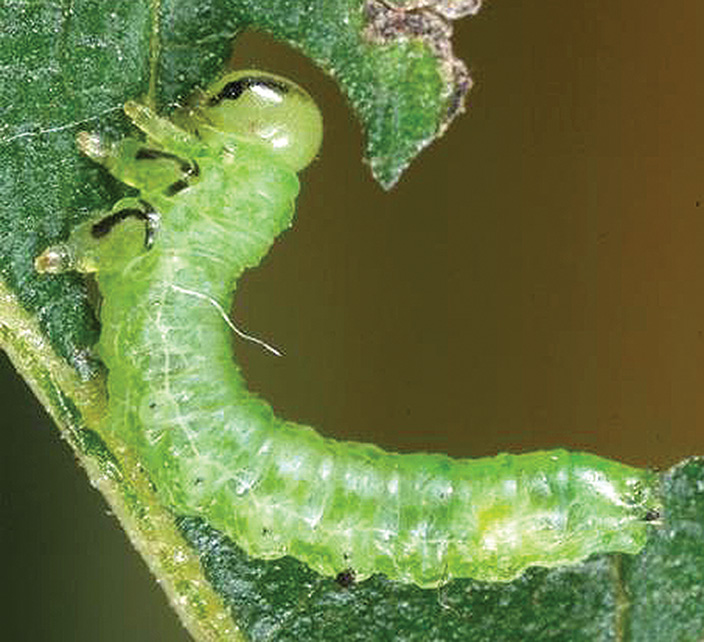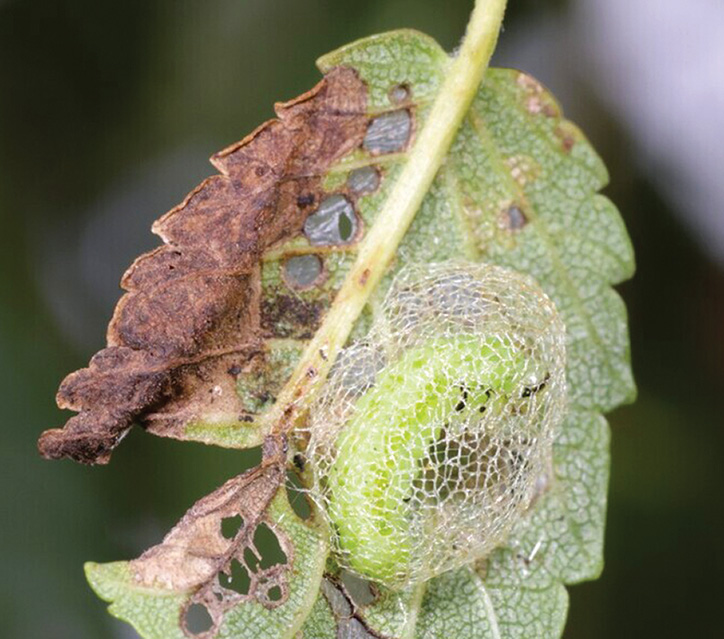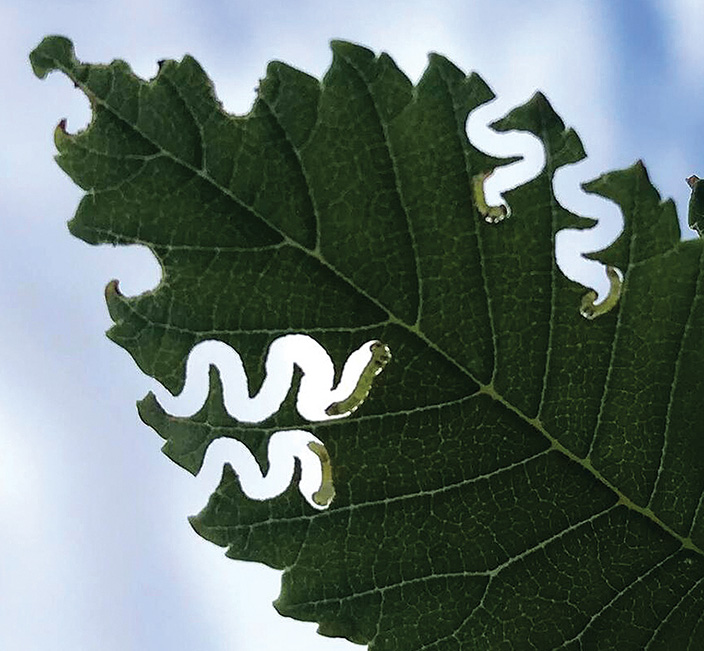According to UMass Amherst, elm zigzag sawfly (Aproceros leucopoda) has been found in Berkshire County in western Massachusetts and Hampden County in south-central Massachusetts. Sometimes called EZS, it’s native to Eastern Asia but is now considered invasive in Europe and North America.
It was first detected in North America in Sainte-Martine, Quebec in 2020 but has since been spotted in Maryland, Massachusetts, New York, Pennsylvania, Vermont and Virginia.
The larvae of this sawfly can cause defoliation of host trees (Ulmus spp.) as the larvae feed on leaves. This could exacerbate the decline of elm trees already threatened by Dutch elm disease (Ophiostoma ulmi). It is unclear at this point which varieties of elm are at risk in our area.
They are strong fliers and cover up to 60 miles in a year. It gets its name from the feeding pattern of the larva.
Eggs
The tiny eggs are blue-green but turn black just before they hatch. They are typically found on the leaf margin.

The larval form
Larva
The larvae are initially grayish-white and approximately 1⁄16 inch long. They turn pale green and have a black stripe on their heads and T-shaped brown or black markings on their legs. They can grow up to 7⁄16 inch in length and can be found from May to October.

A summer cocoon
Pupa
The pupae are encapsulated in cocoons on the underside of leaves. Summer cocoons are loose and light. Winter cocoons are denser and fall to the ground.
Adult
The shiny black adults are about ¼ inch long and have brown wings. The thorax is yellowish-brown and has a white mark on the bottom. They have yellowish legs.
Life Cycle
The female, who lives less than a week, reproduces parthenogenetically (asexually) and can produce four or more generations per year. So far, no males have been found.
After several days, the larvae emerge and begin to eat. Their feeding leaves behind a zig-zag pattern in the leaf.
The larvae go through a number of in star stages for a couple of weeks before they enter the pupal stage. Pupation takes 2-3 days and adults emerge about a week later.
Habitat
Elm zigzag sawfly feed and develop on various types of elm trees across a variety of natural and urbanized habitats. They can withstand temperatures as low as -30°C.

The larval damage of elm zigzag sawfly
Identification
The zig-zag feeding pattern is the key to identifying it early. The larvae can completely strip a leaf except for the veins. In some cases trees may be partially or completely defoliated.
Host Plants
Elm zigzag sawfly larvae feed exclusively on the leaves of elm trees (Ulmus spp.).
In Europe, outbreaks regularly defoliate urban trees and large tracts of natural forest.
Generally, defoliated trees can recover from a defoliation event. However, if trees are heavily defoliated year after year, they may become weakened or stressed, which predisposes them to other pests or results in tree death.
Pesticide application is usually limited to individual trees or small stands. Treatments should occur in the spring as soon as larvae emerge.
For more information go to https://bit.ly/3Rm5khY
– Compiled by Will Rowlands
REPORTING
People can contact the CAES Insect Information Office (IIO) with questions and sightings. Photos of insects and/or damage are helpful. Photos can be emailed to Katherine.Dugas@ct.gov or to Dr. Gale Ridge at gale.ridge@ct.gov
Samples can also be brought in or mailed to CAES with an attention line to the Insect Information Office at:
Jenkins-Waggoner Laboratory
CT Agricultural Experiment Station
123 Huntington Street
New Haven, CT 06511
Phone: (203) 974-8600
The IIO is open Monday through Friday from 8:30 am to 4:30 pm.




